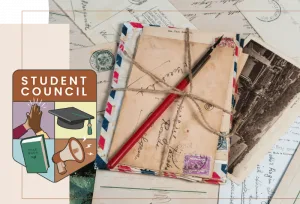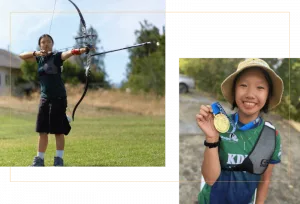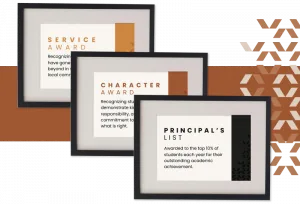From Your Student Council’s Indigenous Cultural Connections Committee:
Canada is home to a vibrant and diverse Indigenous heritage, and here at HCOS, we’re excited to share the richness of Canadian culture. The Indigenous Cultural Connections Committee proudly presents…What Is Regalia?

Emily K
HCOS Student council Indigenous Student Representative
When I was little, my mom took me to my first Powwow—a vibrant Indigenous festival with music, dancing, singing, and food. I saw dancers in stunning Regalia: outfits with feathers, bells, and intricate beadwork. That day sparked my love for Regalia, but what is it?
Regalia is traditional Indigenous clothing worn for ceremonies and celebrations, from earrings to moccasins. It’s a storytelling tool, reflecting who you are and where you come from. No two are alike, each piece is personal, shaped by family and history. Across Canada’s 630+ First Nations, Inuit, and Métis communities, Regalia varies, like Coastal Salish cedar designs or Plains Cree quillwork, or the Métis sash. It’s also wearable art, beadwork, feathers, bells, and everything in between transform it into a masterpiece, showcasing skills passed down for generations. Making it can take years, learning all the different necessary skills from Elders and family.
One of my favorite techniques for making Regalia is beadwork because of its versatility. Beadwork is used in many Regalia styles to depict animals and places that are important to the wearer. Beadwork can be used to depict anything from a wolf motif to Hello Kitty!
My Regalia means everything to me. For graduation, my mom gifted me a beaded cap and earrings tied to our family’s story. She taught me to bead and sew, so I could create my own. Regalia is a huge part of Indigenous culture—it’s our past, families, future, and art.
If you want to learn more about regalia and its history, check out this article or reach out to our student council’s Indigenous representative.
The Student Council’s Indigenous Cultural Connections Committee
“Hóyówélh” is goodbye in the Stó:lō Shxwelí – Halq’eméylem Language. Listen to how it’s pronounced by clicking here!
Note: This is organized and run by the Student Council and is not overseen by HCOS.



